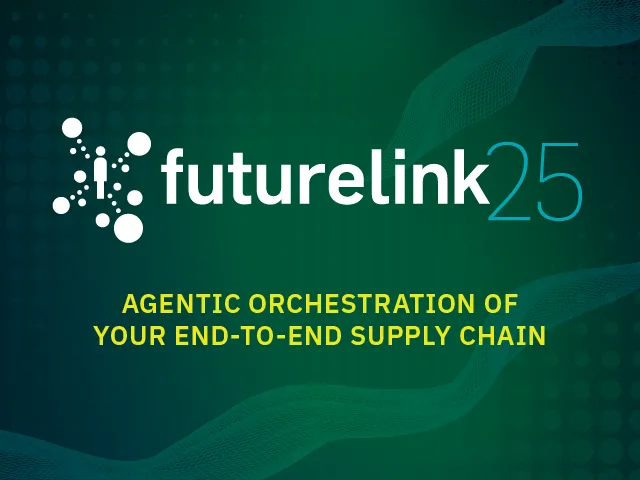Table of contents
In life sciences supply chains, poor planning doesn’t just hurt efficiency—it puts patients at risk. That message came through loud and clear at TraceLink’s recent seminars in Paris and Frankfurt, where industry leaders across the supply chain gathered to explore how new models of collaboration and digitalisation are reshaping the way we plan, produce, and deliver medicines.
Among the many critical themes discussed, forecasting and planning stood out as a shared pain point—and a powerful opportunity. Across manufacturers, CMOs, and downstream partners, the consensus was clear: planning systems are only as good as the quality and timeliness of the data they receive. And today, that data is too often delayed, inconsistent, and fragmented.
Attendees described a supply chain landscape still dominated by manual workflows and partner silos. Forecasts arrive via spreadsheets, emails, and EDI files on inconsistent schedules, in incompatible formats, and with little context. Planners are left scrambling to reconcile conflicting inputs, build a complete picture of market demand, and adjust supply plans on the fly. The result is a reactive approach to planning, marked by last-minute changes, production inefficiencies, and avoidable stockouts or excess inventory.
One attendee put it bluntly: “Real-time insight is really the dream.” And yet, everyone in the room recognised that the dream must become reality—because the current state is no longer sustainable.
The good news is that with a scalable, fully-interoperable, and automated way to collect and standardise forecast data across all customers, companies can shift from reacting to anticipating—and give planners the timely, high-quality inputs they need to make faster, better, and more accurate decisions.
MINT for Commerce Eliminates Manual and Error-Prone Forecasting and Planning
That’s where TraceLink’s MINT for Commerce comes in. Built on the OPUS Platform and leveraging the world’s largest digital supply network for life sciences, MINT provides a scalable, partner-friendly approach to forecast and planning collaboration.
Rather than relying on costly point-to-point integrations, MINT uses a B2N “Integrate-Once™” model that allows life sciences companies to link to thousands of trading partners through highly efficient and cost effective reusable configurations. Downstream customers can share forecast and planning data through multiple modes—system integration, file uploads, or direct entry—depending on their technical maturity and resources. TraceLink MINT for Commerce also delivers the following:
- Multi-modal interfaces give each customer a way to participate without added burden—whether through direct data entry via the user interface, file upload, or integration with their business system.
- Prebuilt integrations—Link Actions—with major ERP and other system providers remove the need for expensive IT resources or custom integration projects.
- OPUS Reports & Dashboards enable teams to easily analyse forecasting and planning data, identify issues, and uncover insights to improve supply performance—without relying on spreadsheets or IT support.
The flexibility provided by MINT for Commerce is critical. As several seminar participants noted, many trading partners are willing to share data—but not if it requires costly IT projects or additional headcount. MINT eliminates that burden, making it easy and cost effective for partners to participate in digital planning workflows without disruption.
“Once we understood the concept, we were all in,” said one life sciences executive who was initially resistant to implementing a new technology.
The Results: Faster, Smarter, More Accurate Planning
By automating the exchange of forecast and planning data across the network, MINT empowers life sciences companies to:
- Accelerate and improve forecasting with real-time customer inputs
- Minimise last-minute production changes, stockouts, and excess inventory
- Reduce manual work for planners and partners alike
- Gain better insights into downstream demand and upstream capacity
- Strengthen customer service while lowering operational costs
And perhaps most importantly, MINT helps companies unlock the full value of their existing Integrated Business Planning (IBP) platforms—by ensuring those platforms are fed with timely and accurate data.
As one speaker at the Frankfurt Seminar observed, “You can have great KPIs on the forecast side, but that doesn’t mean you’re performing well.” True performance comes from trustworthy inputs, scalable collaboration, and shared visibility across every link in the chain.
See What’s Next at FutureLink Barcelona
For those looking to take the next step, FutureLink Barcelona 2025 offers a unique opportunity to learn how industry leaders are transforming their planning and forecasting processes with TraceLink MINT.
Taking place 6–8 October at the Grand Hyatt in Barcelona, FutureLink will bring together experts from across the life sciences supply chain to explore the future of agentic orchestration—powered by real-time, multienterprise supply chain data.
You will hear directly from companies like CIT Pharma Contract Packaging and Devatis, who are using MINT to eliminate blind spots, shorten lead times, and improve forecast accuracy across their customer networks. You will also gain insight into how digital order-to-cash processes, AI-driven planning, and multienterprise supply chain collaboration are unlocking new levels of agility and efficiency.
Whether you are leading supply planning, external manufacturing, commercial operations, or digital transformation, FutureLink Barcelona is the ideal opportunity to network with peers, learn from innovators, and build the foundation for more intelligent planning across your end-to-end supply network.




